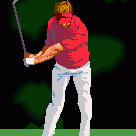-
Topics Being Discussed Right Now on The Sand Trap
-
- 23 replies
- 8,783 views
-
- 11 replies
- 6,734 views
-
- 1 reply
- 337 views
-
- 11,193 replies
- 1,014,691 views
-
"5 Minutes Daily" Practice Challenge 1 2 3 4 1024
By iacas, in Instruction and Playing Tips
- 5 minutes daily
- dedication
- (and 6 more)
- 18,425 replies
- 1,892,820 views
-







Recommended Posts
Create an account or sign in to comment
You need to be a member in order to leave a comment
Create an account
Sign up for a new account in our community. It's easy!
Register a new accountSign in
Already have an account? Sign in here.
Sign In Now